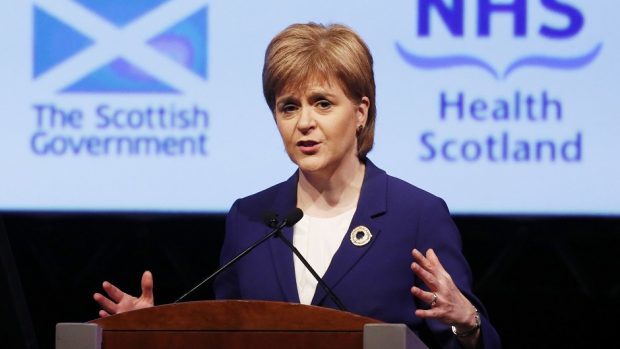Owners of plush homes across the north and north-east could be facing massive rises in their council tax bills.
First Minister Nicola Sturgeon has confirmed the Scottish Government is considering a shake-up of the banding system.
The SNP leader said her party would adopt a “progressive” approach as part of an expected council tax overhaul if the Nationalists remain in power after May’s Holyrood elections.
Two new top-rate bands – I and J – could be introduced as part of a strategy to get well off homeowners to pay more to their local authorities.
Currently, houses worth over £212,000 in 1991 are in Band H – but properties valued above that could be taxed more if the two higher bands were introduced.
More than 12,000 families – including many in Aberdeen and Aberdeenshire – could take a financial hit if the changes were introduced.
The proposals echo the contents of a recent Centre for Economics and Business Research report into council tax bands in England, which suggested families living in Band H homes should be paying £1,500 more annually than they are currently.
In Aberdeen, that would mean the annual council tax bill for the wealthiest families rising from £2,461 a year to £3,961.
Aberdeenshire bills would go up to £3,782, in Moray they would rise to £3,770, and bills in the Highlands, Shetland and Orkney would also soar above £3,500 a year.
Ministers recently set up a cross-party commission to investigate options for potential changes and the SNP will present its final proposals in its manifesto before the Holyrood elections.
The first minister said: “We will see what the cross-party commission says.
“I am not saying this is going to be our policy but you could change the bands for council tax without doing a revaluation.
“You could change the proportions between the bands, that doesn’t depend on a revaluation.
“The progressive principle will run through all of the decisions we take on tax. That is true of stamp duty – it will be true of council tax or any future proposal on local government finance.”
But Scottish Conservative housing spokesman and north-east MSP Alex Johnstone warned against any potential changes to council tax bands.
He said: “The tax burden on hardworking people is already heavy enough without threats of further increases.
“The Scottish Conservatives are committed to not increasing that burden and, where possible, would like to lessen it.
“It’s clear from this that both the SNP and Labour want to generate more money by hammering families right across the north east.”
As well as rises for the wealthiest, the poorest families could enjoy reductions in their council tax bills.
A Scottish Government spokeswoman said: “Scottish ministers consider the current council tax system as a whole to be unfair.
“That is why, along with our local government partners, we have established the cross-party Commission on Local Tax Reform to examine fairer alternatives.
“The Scottish Government awaits the commission’s report, which is due shortly.”
